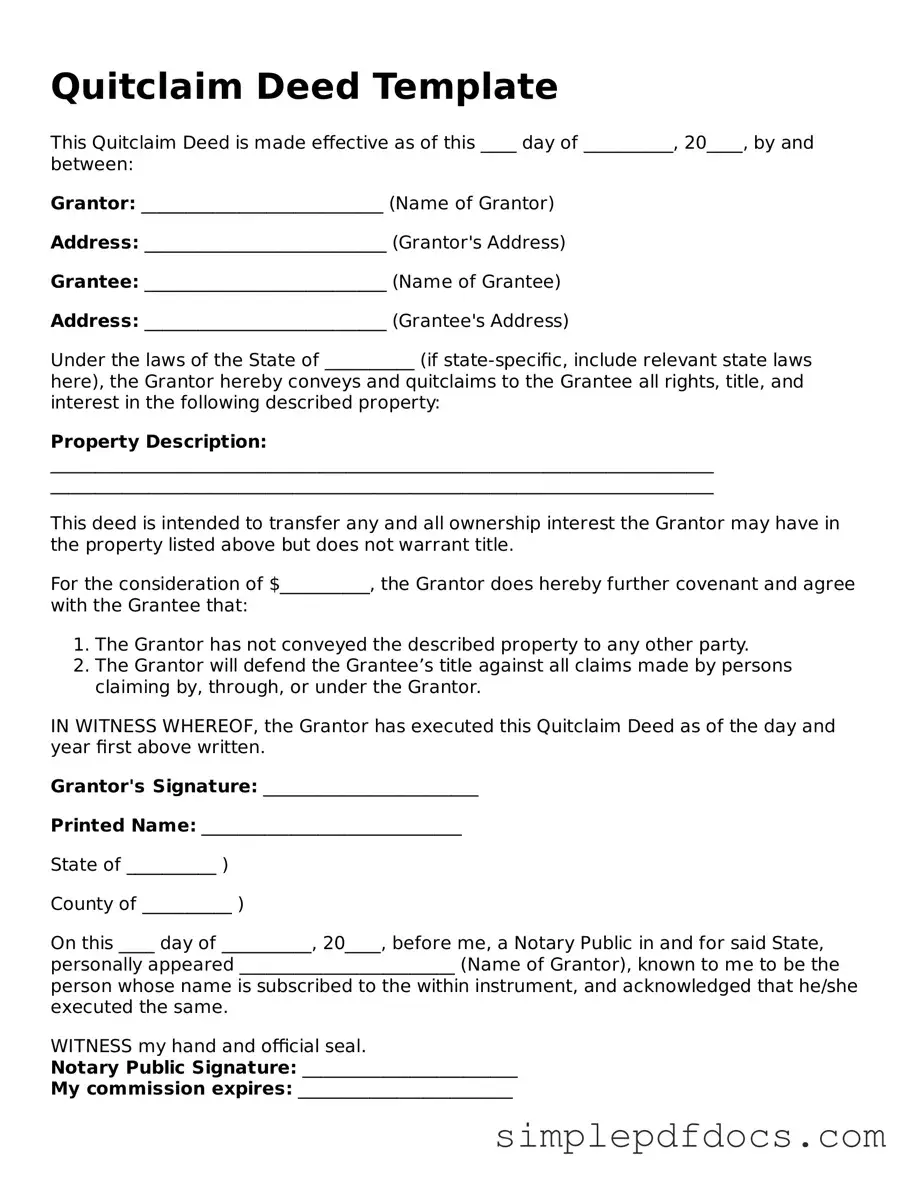A Quitclaim Deed is a legal document used to transfer ownership of real property from one party to another without making any guarantees about the title. This form is particularly useful in situations where the parties know each other well, such as family members or friends, and trust that the transfer will be smooth. Unlike other types of deeds, a Quitclaim Deed does not provide any warranties or protections regarding the property’s title. This means that the grantor, or the person transferring the property, relinquishes any claim to the property without ensuring that the title is clear or free of liens. The form typically includes essential details such as the names of the grantor and grantee, a legal description of the property, and the date of the transfer. Additionally, it must be signed by the grantor, and in some jurisdictions, notarization may be required to make the document legally binding. While a Quitclaim Deed can be a quick and straightforward way to transfer property, it is crucial for both parties to understand the implications of such a transfer, particularly regarding any potential claims or debts associated with the property.
